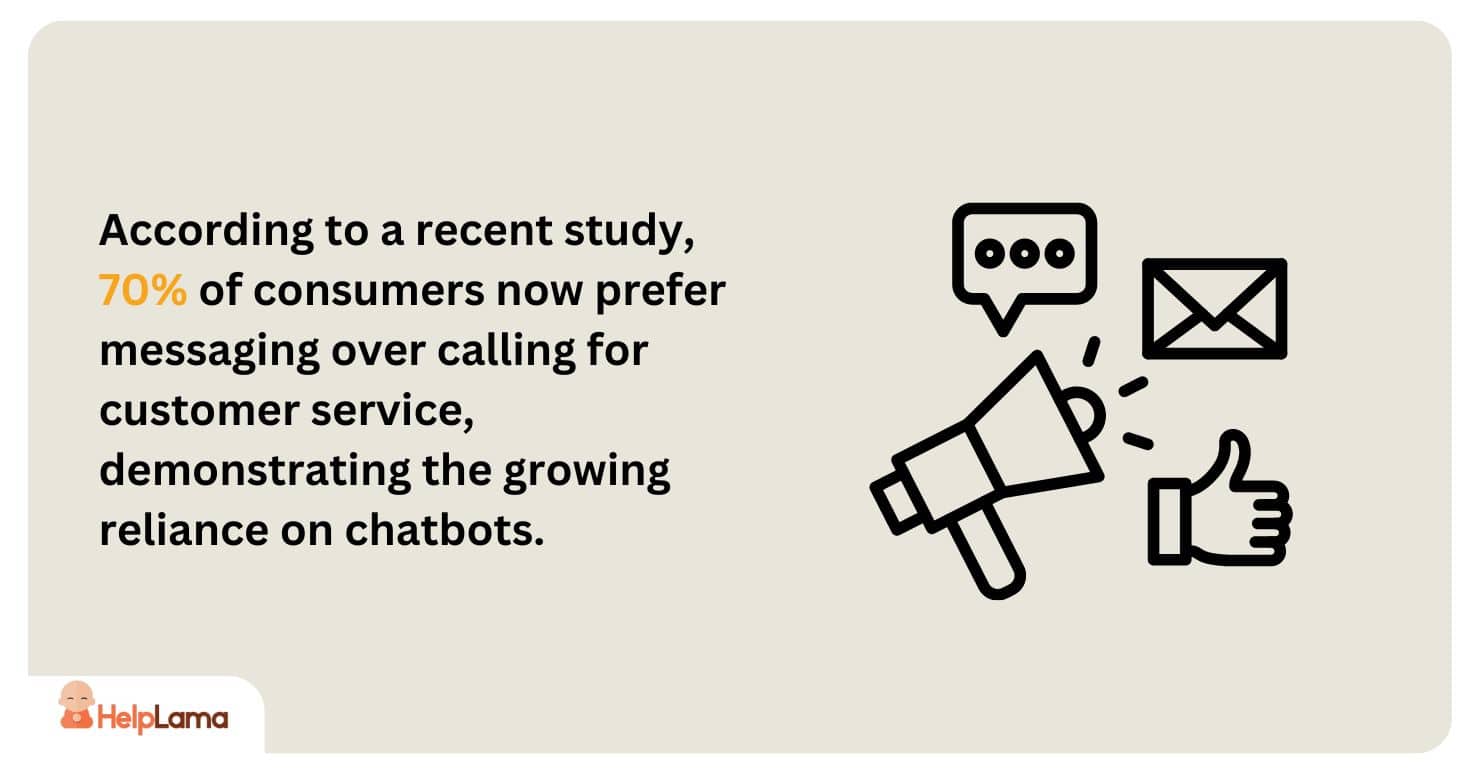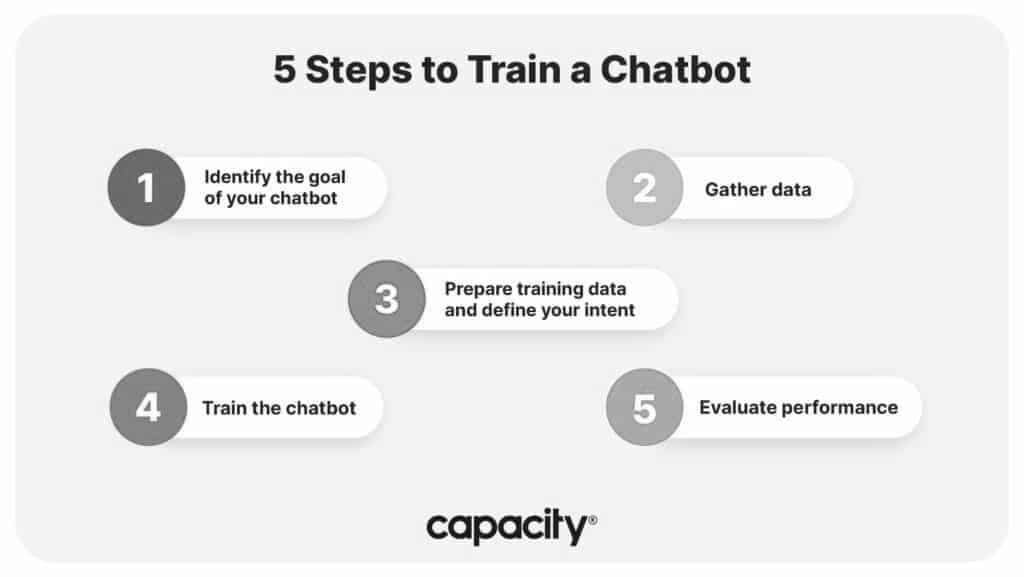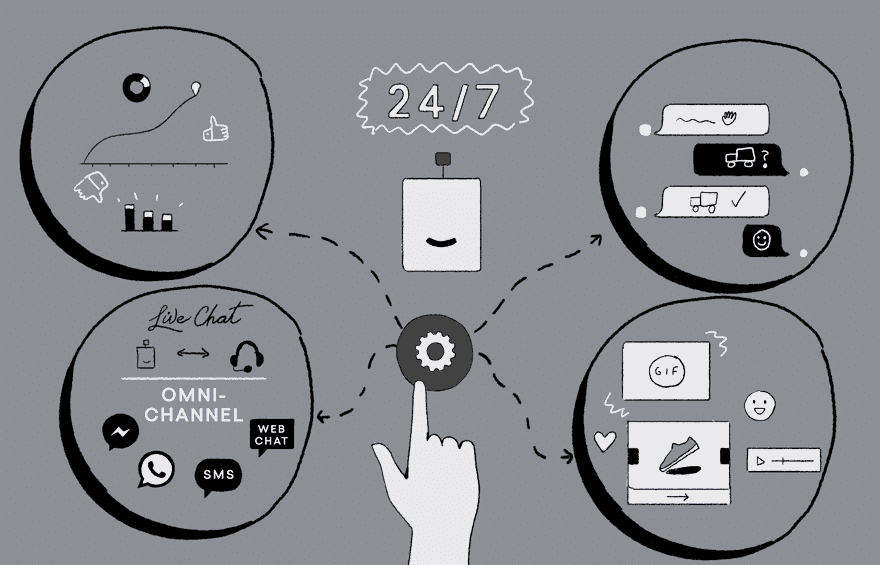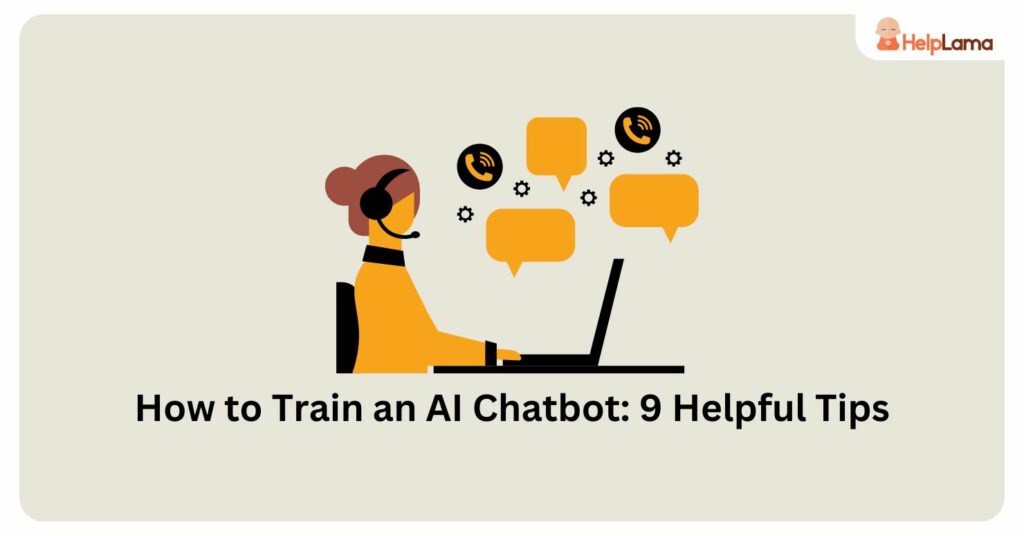Last Updated: December 2025
Knowing how to train AI chatbot effectively has become crucial for businesses to harness their full potential. Artificial Intelligence (AI) chatbots are transforming how businesses interact with customers.
According to a recent study, 70% of consumers now prefer messaging over calling for customer service, demonstrating the growing reliance on chatbots. As chatbots continue to evolve, learning how to train AI chatbot is a plus point as a whole.
Basic Terms Required for Chatbot Training
Intent: The purpose or goal behind a user’s query.
Entity: Specific pieces of information in a user’s input, such as names, dates, or locations.
Dialogue Flow: The path a conversation follows based on user inputs and chatbot responses.
Natural Language Processing (NLP): The technology used to help chatbots understand and interpret human language.
Machine Learning (ML): Algorithms that allow chatbots to learn from data and improve over time.
Training Data: The dataset used to train the chatbot, including historical chat logs, customer emails, and social media interactions.

Steps to Train AI ChatBot
1. Plan Out The Use Cases of the Chatbot.
Do not create a wish list of what you desire for your bot to accomplish. Know what your clients expect of your virtual assistant.
What can conversational AI help your business with? While you might want the chatbot to generate more leads, your shoppers just want to track their orders. Indeed, a study reveals that checking order status (71%) and product searches (67%) are the main functions buyers would like to use a chatbot.
2. Gather and Preprocess Data
Use the dataset that represents all of your chatbot spheres (e.g., all possible stoner queries and responses).
Preprocessing is the process of drawing the data, similar to removing duplicates and correcting crimes with standard formats. Removing indistinguishable values from the dataset would help ensure the quality of the data, which is necessary for better training. From learning accurate responses to the applicable environment, clean data helps the chatbot have a lot at its disposal to enhance performance.
3. Choose the Right Platform and Tools:
This goes without saying, but knowing what’s the right platform and tools you should work with is vital to making a chatbot that can handle a lot of dispatches and make sense of them. Look for platforms that more fluently incorporate NLP (natural language processing) and can be integrated into your systems. Any tools should grease the training of models and ease deployment and performance monitoring.
4. Plan the dialogue flow:
Draw an overview of the discussion inflow to develop streamlined and coherent discourses. This is the visionary identification of different stoner intents and opinions on what to spark for each intent. When the chatbot has a well-designed discussion inflow, it’s fluently passable and veritably stoner-friendly. It assists in identifying gaps and issues in the commerce process beforehand and makes it easier to prepare and design.
5. Train the Model:
Use your preprocessed data frame to train the chatbot model, picking an algorithm that suits your requirements. Training the model requires feeding it some data to learn the patterns and give the correct responses. Ultimately, a process of nonstop evaluation during training would help the model acclimate better and ameliorate performance. A good model can indeed understand the queries of druggies and respond more, which will ameliorate the overall experience of the stoner.
6. Real-World Use Scenarios Test:
Regular testing with factual use scripts can point out advances to be made in the chatbot’s real-world responses. You have to pretend how humans would interact and see if your chatbots are different or not. ensure through testing that the chatbot can interact with different drugs and respond to a variety of requests correctly. It helps to punctuate areas that bear fixing, erecting a robust, sturdy chatbot.
7. Iterate—Get Feedback on Your Product:
Collect feedback from your target audience on the product and modify it accordingly. Fine-tuning the parameters of the chatbot and retraining the model to ameliorate delicacy and applicability. Fine-tuning is a process of continuously covering performance. After every interval, due to feedback, real-time updates can be made regularly so that the chatbot changes with the requirements and prospects of the drugs.
8. Create a feedback loop:
Have some kind of system where your druggies can report problems and submit ideas to ameliorate them. Because of this feedback circle, the chatbot will continue to learn and improve over time. Responding to stoner feedback instantly allows you to tweak your results and ensure their better functioning. This nonstop process assists in keeping the stoner experience of high quality and makes sure that the chatbot continues to be applicable and effective.
9. Monitor and update regularly:
Keep checking your chatbot using analytics and stoner feedback, and modernize it accordingly. Regular updates will need to punctuate new information, respond to changing issues, and ameliorate responses. It allows monitoring of trends and/or areas that may bear announcements. With the advancement in technology, how can you guarantee high efficacy coupled with resemblant applicability with a streamlined service portfolio and business ideal unless you keep your chatbot up to date?
Recommended- https://saufter.io/what-is-a-conversational-marketing-chatbot-a-complete-guide/
Personalize Your AI Chatbot

Personalization remains one of the most potent ways to make your AI chatbot more effective. Chatbot personalization is about customizing the relationships your chatbot has based on each unique stoner’s interests, actions, and conduct. Integrate smart algorithms and stoner data so you provide an engaging experience your druggies will love. This works in two ways, both by adding client satisfaction and, at the same time, by erecting a stronger connection between your brand and guests.
To achieve personalization, begin by collecting and assessing stoner data. This may involve purchase history, browsing history, and demographic information. This data can help your chatbot by offering suggestions, responding according to stoner input, and, at times, indeed, prognosticating what the stoner wants before explicitly stating it. For example, proactively informing a stoner about the latest advents or special offers in a constantly asked product order directly based on their buying history.
Personalization still demands a strong backend system capable of processing and saving large amounts of data. These data are also anatomized through an elaborate machine literacy model to make predictions. Likewise, the addition of NLP (natural language processing) with a chatbot helps to understand and respond positively to the stoner’s language nuances, which enhances the individualized experience.
Integrating multi-channel support
Another important concept for perfecting the effectiveness of your AI chatbot is integrating multichannel support. Guests momentarily look for omnichannel relations working in the background to enable an intertwined experience across communication channels such as websites, mobile apps, social media, and messaging apps.
When your AI chatbot works on multiple channels, druggies have a harmonious and effective experience communicating with your brand on any platform.
Before enforcing multi-channel support, identify the main channels your guests use. This could be via platforms ranging from Facebook Messenger, WhatsApp, Slack, or indeed voice sidekicks such as Amazon Alexa and Google Assistant. After you have discovered these channels, go ahead and build your chatbot through the APIs and SDKs available to help ensure flawless communication across these platforms.
Multichannel support makes it easy for guests to move across different channels without repeating themselves and losing the flow of their discussion. For example, a customer could begin an inquiry on your website, move the conversation to their mobile device, and also follow up via social media—all while not having to ask their questions over and over or re-explain their issue. This position of convenience drastically improves the stoner experience and, thus, significantly reduces disunion during client relations.
Saufter for AI- powered Chatbot
Saufter is an innovative platform specifically designed to build AI-powered chatbots. It combines an intuitive user interface with advanced AI capabilities, making it ideal for beginners and experts alike.
- User-friendly Interface: Saufter’s drag-and-drop editor allows for quick and easy chatbot design without any coding skills required.
- Advanced AI Capabilities: With built-in machine learning and natural language processing, Saufter can understand and respond to complex user queries effectively.
- Integration Flexibility: Saufter supports integration with multiple platforms including websites, social media, and messaging apps, ensuring your chatbot is available wherever your customers are.
- Analytics and Feedback: Saufter provides comprehensive analytics and feedback tools, helping you continuously improve your chatbot’s performance.
Conclusion
Training an AI chatbot involves a strategic approach and nonstop trouble. By understanding your objects, using NLP and ML, and incorporating real-world relationships, you can develop a largely effective chatbot. According to assiduity reports, businesses using AI chatbots see a 56 percent increase in client satisfaction, highlighting the significance of well-trained chatbots.
Enforcing the tips bandied and exercising results like Saufter can significantly enhance your chatbot’s performance, ensuring it meets and exceeds stoner prospects. Get the features of Saufter for your business by subscribing.
















